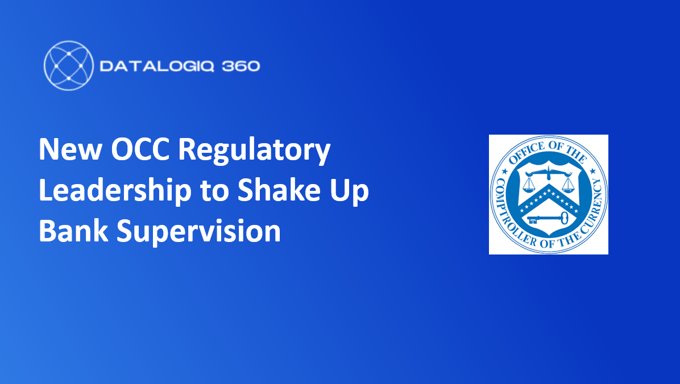🏦 OCC Shake-Up: What Banks Should Watch
Navigating the maze of compliance in the banking sector can feel overwhelming, but with the right strategy, it's possible to transform chaos into clarity.

Regulatory Insights Newsletter | October Edition
The Big Picture
At the end of September, the Office of the Comptroller of the Currency (OCC) offered buyouts that drew nearly 800 employees. This significant workforce reduction has raised pressing questions about how the shake-up will affect banks going forward. Conversations with industry colleagues reveal one consistent theme: uncertainty.
Key Takeaways
Examiner Standards Under Review
The OCC is re-evaluating how it measures compliance. Expect faster, more binary judgments on whether a bank is compliant, with less room for discussion or remediation.
MRAs / MROs May Become Law
“Matters Requiring Attention” (MRAs) and “Matters Requiring Ongoing Attention” (MROs) could shift from supervisory guidance into statutory requirements, raising the stakes for banks.
Loss of Institutional Knowledge
With many senior examiners departing, banks are increasingly facing junior examiners who are still learning on the job. This often creates additional questions, delays, and unnecessary back-and-forth, resulting in a more fragmented, less predictable exam process.
Merger Review Volatility
The OCC recently reinstated expedited merger review after scrapping it in 2024. This back-and-forth underscores the unpredictability of regulatory direction.
Congressional Pressure
Lawmakers are pressing regulators to overhaul MRAs for consistency and transparency. This could limit examiner discretion but also increase compliance burdens.
Compliance Risk Remains #1
The OCC’s own reports continue to flag BSA/AML and consumer compliance as top risks. With fewer buffers, scrutiny in these areas will only intensify.
What This Means for Banks
- Expect less flexibility: junior examiners may escalate issues quickly and inconsistently.
- Prepare for inefficiency: build in time for added back-and-forth during exams.
- Treat MRAs/MROs as binding: prepare as if they’re statutory obligations.
- Strengthen governance: document controls and institutional knowledge before gaps emerge.
- Watch merger policy shifts: opportunities may exist, but volatility is high.
- Engage proactively: shape upcoming rules through associations and comments.
🔮 Outlook: What’s Next
More Conservative Enforcement
With fewer experienced examiners, expect exam teams to err on the side of caution escalating issues faster into MRAs, MROs, or enforcement actions instead of relying on dialogue.
Emerging AI and Data Governance Oversight
Examiners are beginning to probe AI model risk, third-party oversight, and data governance frameworks. With standards still in flux, junior examiners may apply inconsistent or overly strict interpretations.
Greater Cross-Agency Collaboration
As OCC capacity tightens, expect more joint examinations with the Federal Reserve, FDIC, or CFPB. This means a wider lens on governance and compliance practices.
Political Pressure Driving Volatility
Congressional scrutiny of MRAs and merger reviews shows how much politics now shapes regulatory posture. Banks should be ready for policy swings tied to broader agendas, not just supervisory priorities.
Codification of Practices Into Law
By 2026, examiner practices may be formalized through rulemaking or statute, especially around MRAs, consumer compliance, and risk management. This will leave banks with less room to negotiate expectations.
👉 Bottom Line
With fewer senior examiners, banks face a double challenge: stricter oversight and less experienced exam teams. Those that treat today’s uncertainty as a catalyst by investing in governance, control frameworks, and certification of critical assets will be best positioned to navigate both the stricter oversight and the inconsistencies likely to follow.
Regulatory Insights Newsletter
Stay ahead of compliance, governance, and regulatory shifts shaping the banking industry.